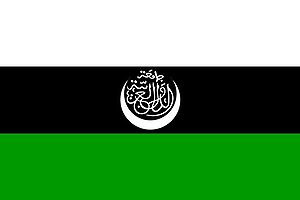Takistan
|
Takistan is a fictional Central Asian country located near the fictional Green Sea. It borders the fictional country of Chernarus. OverviewTakistan is a combination of mountain and desert terrain with few rivers. Areas of it are fertile, stimulating the production of crops including cannabis and poppy. HistoryIn 636, the Takistan kingdom was formed by Muslim tribes, who conquered the whole area of modern Takistan and parts of several surrounding countries. The kingdom prospered till 1219, when the country was overrun by Gengis Khan and his empire and the royal Takistani family was exiled. After decline of Mongolian empire in 16th century, the Takistan country was divided into multiple provinces controlled by neighboring kingdoms for next 300 years. In the 18th century, the descendants of the original dynasty returned from the exile in Istanbul and renewed Kingdom of Takistan. In 1892, Takistan became a formal feudatory of Russian Empire, providing a wild, hostile and scarcely inhabited buffer between Russian territory and British expansion. After the October Revolution in Russia in 1917, the king Abu Khazrad Jaffudi offered the safe haven to Russian „White Guards“. The Kingdom of Takistan, affiliated to the Western world, existed till the coup d' état in 1988. Recent HistoryFollowing the fall of the incumbent monarchy and second exile of royal family, Socialist and Royalist groups fought for supremacy in Takistan. Each faction was backed by world-leading superpowers (Royalists by the USA, Socialists by the USSR), providing support to retain strategic control over the nation's rich resources, particularly its vast crude-oil reserves and huge deposits of precious-metal ore. Reinforced by the open Soviet and Russian military support and large shipments of Eastern weaponry, the Socialists prevailed in 1992. Despite this, pockets of local Royalist tribesmen remained. The supply of crude oil at hand was quickly exploited to expand and strengthen the Takistani state police and armed forces. Scud-B ballistic missiles, missile carriers, and the covert research and development of chemical weapons contributed to the proliferation of military stockpiles with the aim of maximizing Takistan's military might. On April 17, 2012, Royalist tribes, with the rumored support of CIA operatives seeking to destabilize the dangerous regime, succeeded in significantly damaging the production of crude oil. A well-coordinated raid on key oil fields dealt three critical blows to the regime: the loss of a year's production of crude oil, the destruction of 68 % of the country's oil wells, and the sudden lack of resources required to hold Takistan. Power structures started to disintegrate; voices and actions of discontent spread. In a desperate bid to cling to the reins of power, the Socialist Supreme Bureau threatened the nearby country of Karzeghistan with the use of chemical weapons if the oil-rich Sharig Plateau, an integral part of Takistani territory usurped by the British reign in the times of the Takistani monarchy, was not "immediately returned to the people of Takistan." On June 1, 2012, a few days after the ultimatum, Alliance forces deployed bases in rebel-controlled territories and instigated Operation Arrowhead, whose objectives are to neutralize the threat of ballistic missile attacks and nullify the possibility of an attack on Karzeghistan before attempting any humanitarian or political actions. It may take years before the travelers could explore the nature of central Takistan. It is nearly impossible to get a tourist visa, and there are too many dangers waiting in the mountains: marauders, paramilitary Republican Militias, or unexploded ordnance. Natural LifeThe central Takistan is filled by rugged mountains and large areas of sandy deserts. However, central Takistan in general does not suffer from any water shortage. This is because of the huge amount of snow covering the mountain peaks during winters. Unfortunately, this water only runs into several streams and rivers, surrounded by the green areas in otherwise desert-like landscape. All of the local settlements are build around these water supplies. |
